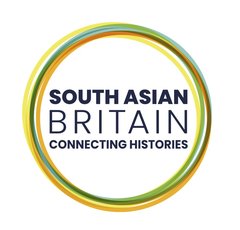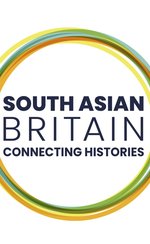Location(s)
King Street
London
EC2V 6DT
United Kingdom
About
The British India Society was founded in 1839, with William Adam, who was a friend of Rammohun Roy, and George Thompson, an acquaintance of Dwarkanath Tagore, spearheading the initiative. The organization was a lobbying group in Britain for better living conditions for India’s ‘native population’ and ‘fellow-subjects’. The organization sprang from the abolitionist movement and drew its inaugural membership committee from the Aborigines Protection Society. The British India Society held its first formal meeting on 6 July 1839 at the Freemasons’ Hall, London, including several Indians, such as Prince Imamuddin, son of Tipu Sultan, Mir Afzal Ali and Karim Ali, agents of the Rajah of Satara and the Nawab Eckbaloo Dowlah, Prince of Awadh, as well as Hirjeebhoy Merwanjee, Dorabjee Muncherjee and Ichangeer Nowrojee.
The Society subsequently published a series of tracts and speeches. The organization’s membership included Quakers and Anglo-Indians, as well as anti-slavery activists. The objective of the organization was to raise wider public awareness of the plight of the population of India, which at the time was severely impacted by famine. It subsequently launched an information campaign to distribute information on India and its governance, including vital statistics, which it published, for example, through the East-India Yearbook. During 1839–40 the British India Society established a wide network of branches across the country and in India, including cities such as Bolton, Bombay, Chesterfield, Doncaster, Durham, Leeds, Manchester, Newcastle upon Tyne, Nottingham, Oldham, Perth, Rochdale, Salford and Wakefield. Leading voices in the organization linked the plight of India's local populations with the situation of Irish peasants. William Howitt, a co-founder, described India in his book Colonization and Christianity (1838) as the ‘Ireland of the East’.
The impact of the Society was limited – it nearly folded due to in-fighting in 1840 but managed to survive. A large-scale public meeting was held in Manchester in August 1840, and in January 1841 it started publishing the monthly newspaper British Indian Advocate, edited by William Adam and later George Thompson. In 1843 Thompson accompanied Dwarkanath Tagore to Calcutta and during Thompson's visit a Bengal branch was established. The British India Society was the first attempt to create a pressure group in Britain that campaigned on behalf of India in Britain, but it was unable to bring together a broader coalition, whilst internal squabbles further undermined its London committee. Nevertheless, it galvanized people through speeches and raised awareness through its agitation. It would be a template for later organizations, including the India Reform Society, East India Association and the British Committee of the Indian National Congress.
Committee members:
W. Adam, W. Aldam, W. H. Ashurst, Jonathan Backhouse, Henry Blanshard, John Bowring, Lord Brougham, F. C. Brown, Thomas Clarkson, Charles Forbes (committee chairman), W. Howitt, Joseph Pease, Alexander Rogers, W. Speir, Joseph Sams, John Stewart, J. Sidney Taylor.
Prospectus of the Provisional Committee for Forming a British India Society, for Bettering the Condition of our Fellow-Subjects – The Natives of British India (London: British India Society, 1839)
Speeches delivered at a public meeting, for the formation of a British India Society; held in the Freemasons' Hall, Saturday, July 6th, 1839. The Right Hon. Lord Brougham, F.R.S. in the chair (London: British India Society, 1839)
The East India Year-Book for 1841 (London: Allen & Co., 1841)
Fisher, Michael Herbert, Counterflows to Colonialism: Indian Travellers and Settlers in Britain, 1600–1857 (Delhi: Permanent Black, 2004)
Leonard, Zak, Ethical Empire? India, Reformism and the Critique of Colonial Misgovernment (Cambridge: Cambridge University Press, 2024)
Mehrotra, S. R., ‘The British India Society and Its Bengal Branch, 1839–46’, The Indian Economic & Social History Review 4.2 (June 1967), pp. 131–54.
Visram, Rozina, Asians in Britain: 400 Years of History (London: Pluto Press, 2002)
Murdoch Brown Collection, Mss Eur F227, India Office Records, Asian and African Studies Reading Room, British Library, St Pancras
Banner image credit
Inside the Ayahs’ Home, Living London, 1904, Shelfmark: 10349.h.12, Courtesy of British Library Board
Public Domain
Image credit
© Remaking Britain: South Asian Connections and Networks, 1930s – present


